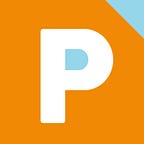SXSW Interactive 2015 Recap
South by Southwest (SXSW) Interactive was back again this year, filled with emerging technologies, inspiring speakers, and new possibilities. With over 1400 sessions, it was hard to not to have your mind blown somewhere.
And we were glad to be back, immersing ourselves in the experience, and live-Tweeting and Instagramming the whole time to keep you up to date. In case you missed it, we’ve pulled together some of the highlights here:
There was a major focus on user experience, not only in the traditional sense, but in ways that extend beyond a mobile device.
Take Wearables. As you might expect, they were back again this year, and in considerably high volume. But this year, there was more to the “form-fit” of these devices: both in terms of how they look and how you wear them. Fashion brands are even teaming up with tech experts to create a generation of devices that essentially disappear.
And that trend extends to health. Check out the world’s first smart Band-Aid designed to help fight Ebola.
And then there’s “Therables,” hinged on Internet of Things (IoT), where everything is connected (physically and digitally) in some way. The idea that technology is invisible was really pushed: your bed itself will be a sensor and can tell you how you slept, and then your carpet could measure your steps or vital signs. Some of this isn’t ready to be mainstream yet, but imagine the experiences we could create for patients to help seamlessly inform them that it’s time to take their medication or to drink more water based on their environment.
Big Data isn’t a new topic, but before you roll your eyes and scroll down, consider how much access to data we have today. Through web analytics, social media, wearable devices, and our smartphones, there is a slew of information at our fingertips that we need to try to understand. And in no industry is that more relevant than in healthcare.
But how do we crunch that data? And how do we put it in a format that is health literate? And how much data is too much? Those are some major questions that were asked at the various health panels at SXSW. With new apps and at-home tools that assist with wireless diagnostics and tracking, people now have the ability to send physicians information at times other than at their appointments. But that takes up even more of doctors’ time, so how can they possibly see that info and treat their in-house patients? SXSW introduced us to some new approaches that may be alleviating this issue, including things like Virtual Assistants and Data Management Specialists.
The old adage that “content is king” is exactly that — old. The premise isn’t necessarily wrong (content is still a huge and important topic that we have to get right), but now it all starts and ends with the user. We need to understand our customers in deeper ways than we’ve ever had to think through before.
First, content cannot simply disrupt what users are doing online. If they’re on social networks, they’re likely there to connect with friends or family. When a brand pops up forcing an ad, it’s noticeable and irritating. We need to think through ways of delivering content in more native ways based on the platforms our customers are on, and focus on pull messaging versus push.
And that trend is coming through as context-based messages, or messages that appear based on what you’re doing at a particular time. For example, Google Now are “cards” that appear in your Google search based on search characteristics. They’ve just opened the platform up, and that will now be available in any app that decides to make use of the API.
Second, content is evolving into more innovative experiences. It’s not enough to have video content; it has to be immersive, 360-degree video. One app that blew up at SXSW was Meerkat, which now allows live-streaming on Twitter — as if the platform wasn’t “real-time” enough!
With these new advancements, pharma needs to think beyond what the medication provides their patients. Bringing all the learnings together would create seamless experiences that make use of tons of data, and deliver it in a format relevant to the user.
So what does that look like in the healthcare space? One example stems from the fact that for the first time ever, more people are dying from preventable diseases than from infectious diseases. So clearly, programs that intend to help people with these diseases and lifestyle change are failing. The Prevent Program, created by Omada Health, puts users in the center of the program and helps them reach their goals by giving them a personal health coach, lessons about their health, and the right incentives.
That’s just some of what we’ve learned at SXSW. For more information on what we learned and how we’re applying that to healthcare, reach out to us, and we’ll share our full recap with you.
